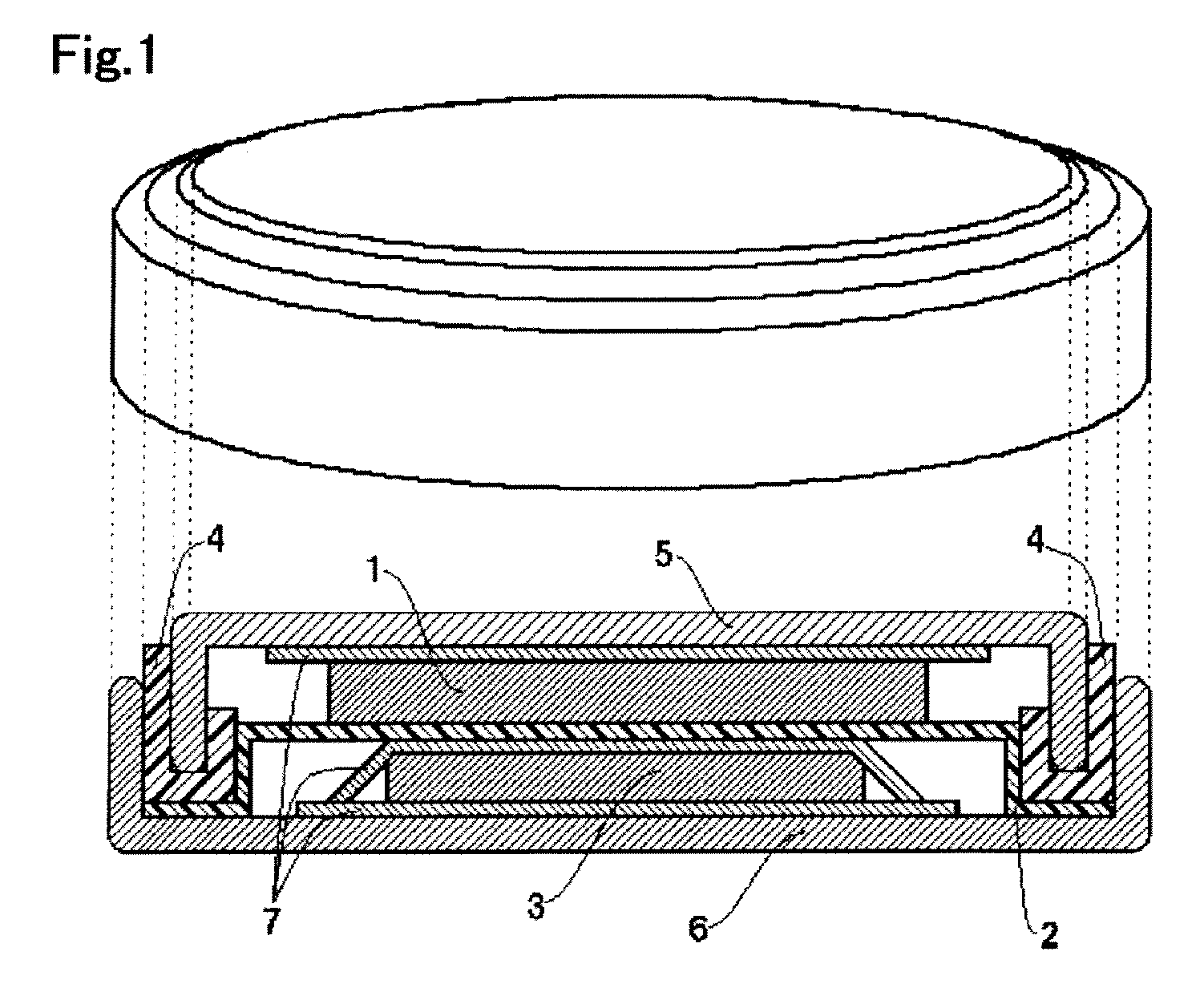Cathode active material for a nonaqueous electrolyte secondary battery and manufacturing method thereof, and a nonaqueous electrolyte secondary battery that uses cathode active material
a nonaqueous electrolyte secondary battery and active material technology, applied in the direction of cell components, final product manufacturing, sustainable manufacturing/processing, etc., can solve the problems of low crystal thermal stability of lithium nickel oxide having high capacity, high energy density of lithium secondary batteries, and inability to obtain adequate characteristics, etc., to achieve excellent discharge load characteristics, high charging and discharging capacity, good cycle characteristics and thermal stability
- Summary
- Abstract
- Description
- Claims
- Application Information
AI Technical Summary
Benefits of technology
Problems solved by technology
Method used
Image
Examples
example 1
[First Process]
Preparing the Lithium Nickel Composite Oxide
[0076]Lithium nickel composite oxide that is represented by the compositional formula Ni0.82Co0.15Al0.03Li1.02O2 was prepared according to the method described below.
[0077]First, nickel sulfate hexahydrate (Wako Pure Chemical Industries, Ltd.), cobalt sulfate heptahydrate (Wako Pure Chemical Industries, Ltd.) and aluminum sulfate (Wako Pure Chemical Industries, Ltd.) were weighed to the desired proportions, and mixed, then were dissolved in ion-exchange water to obtain the raw material aqueous solution. This raw material aqueous solution was dripped into a stirring reaction tank with a discharge opening which contained water and which was kept at 50° C. simultaneously with specified proportions of ammonia water (Wako Pure Chemical Industries, Ltd.) and caustic soda water solution. The pH was kept at 11.5 and the retention time was 11 hours, and by the reaction crystallization method, spherical shaped nickel hydroxide in whic...
example 2
[0089]Other than preparing the amount of manganese sulfate solution so that the Mn coating ratio becomes D(s)=0.005 in the second process, the cathode active material was obtained in the same way as in Example 1. Using SEM, it was confirmed that the surface of the obtained cathode active material was covered by an aggregate of needle shaped and / or plate shaped lithium manganese composite oxide.
[0090]After that, as a result of performing evaluation in the same way as was performed in Example 1, it was shown that the initial discharge capacity was 189.3 mAh / g, the maximum DSC output (calorific value) was 50 W / g and the exothermic peak temperature was 262° C.
example 3
[0091]Other than preparing the amount of manganese sulfate solution so that the Mn coating ratio becomes D(s)=0.012 in the second process, the cathode active material was obtained in the same way as in Example 1. Using SEM, it was confirmed that the surface of the obtained cathode active material was covered by an aggregate of needle shaped and / or plate shaped lithium manganese composite oxide.
[0092]After that, as a result of performing evaluation in the same way as was performed in Example 1, it was shown that the initial discharge capacity was 178.3 mAh / g, the maximum DSC output (calorific value) was 19 W / g and the exothermic peak temperature was 295° C.
PUM
 Login to View More
Login to View More Abstract
Description
Claims
Application Information
 Login to View More
Login to View More - R&D
- Intellectual Property
- Life Sciences
- Materials
- Tech Scout
- Unparalleled Data Quality
- Higher Quality Content
- 60% Fewer Hallucinations
Browse by: Latest US Patents, China's latest patents, Technical Efficacy Thesaurus, Application Domain, Technology Topic, Popular Technical Reports.
© 2025 PatSnap. All rights reserved.Legal|Privacy policy|Modern Slavery Act Transparency Statement|Sitemap|About US| Contact US: help@patsnap.com



